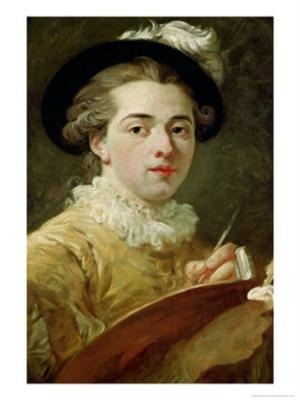

Jean-Honoré Fragonard
FR
169
Artworks
1732 - 1806
Lifespan
Artist Biography
Jean-Honoré Fragonard, born in Grasse, France, on April 5, 1732, was a seminal figure of the late Rococo period, celebrated for his exuberant and hedonistic portrayals of aristocratic life. Moving to Paris around 1738, his artistic inclinations led him from a brief apprenticeship with a notary to the studios of Jean Siméon Chardin and, more significantly, François Boucher around 1748. Under Boucher's tutelage, Fragonard rapidly developed his talents, mastering his master's style to such an extent that he was entrusted with creating replicas. In 1752, sponsored by Boucher, he won the prestigious Prix de Rome, which facilitated further study under Carle Van Loo at the École des Élèves Protégés in Paris, preparing him for a career as a history painter.
In 1756, Fragonard embarked for Italy, spending five crucial years at the French Academy in Rome. This period was marked by diligent study, copying Baroque masters, and forming a close friendship with fellow painter Hubert Robert. A pivotal influence was the Abbé de Saint-Non, a wealthy amateur artist and patron, who accompanied Fragonard on an extensive tour of Italy in 1760-61. Together, they sketched Roman countryside, ancient ruins, and Italian gardens, particularly the Villa d'Este in Tivoli, which profoundly shaped Fragonard's landscape art. This immersion in Italian art and scenery, including the works of Tiepolo in Venice, enriched his artistic vocabulary, leading to a fluid and vigorous style.
Upon returning to Paris in 1761, Fragonard initially aimed for an academic career. His grand historical painting, *Coresus and Callirhoë*, exhibited at the Salon of 1765, earned him critical acclaim, purchase by King Louis XV, and admission to the Académie Royale. However, despite this success, Fragonard soon diverged from the path of a history painter. He found greater appeal and lucrative opportunities in serving a burgeoning private clientele of financiers and courtiers, who desired smaller cabinet pictures, landscapes, and decorative scenes imbued with sensuality and playful eroticism. This shift defined his mature career, producing iconic works like *The Swing* (1767) and the inventive *Portraits de fantaisie* series (c. 1765–72).
Fragonard's style was characterized by a remarkable facility, rapid brushwork, and a delicate, often suggestive, hedonism. His admiration for Dutch and Flemish masters like Rubens, Hals, and Rembrandt is evident in his vigorous execution and rich color palettes. In 1769, he married Marie-Anne Gérard, a painter from his hometown. A major commission came from Madame du Barry for her Pavillon de Louveciennes, the *Progress of Love* series (1771–73). However, these paintings were ultimately rejected, possibly deemed too Rococo for the emerging Neoclassical taste. A second trip to Italy in 1773–74, with patron Bergeret de Grancourt, further rekindled his interest in landscape and garden imagery. In his later years, his sister-in-law, Marguerite Gérard, became his student and collaborator, and his work began to incorporate domestic scenes and even hints of Neoclassicism, though his Rococo spirit largely persisted.
The French Revolution dramatically altered Fragonard's fortunes. His art, so closely tied to the Ancien Régime, fell out of favor, and his aristocratic patrons were dispersed. He briefly retired to Grasse but returned to Paris in 1791. Through the intervention of Jacques-Louis David, he secured a curatorial position at the new national museum (the Louvre), but lost this post in 1797. Fragonard spent his final years in relative obscurity, his prolific output of over 550 paintings and thousands of drawings largely forgotten.
Jean-Honoré Fragonard died in Paris on August 22, 1806. His work remained unfashionable until the mid-19th century when he was rediscovered and hailed as one of the great poetic painters of 18th-century France. His legacy lies in his masterful capture of intimacy and veiled eroticism, his vibrant and fluid brushwork that influenced the Impressionists, and his unique ability to elevate genre scenes into witty and insightful commentaries on his time. Fragonard remains celebrated for his spirited depiction of love, pleasure, and the fleeting moments of joy, encapsulating the essence of the Rococo era.